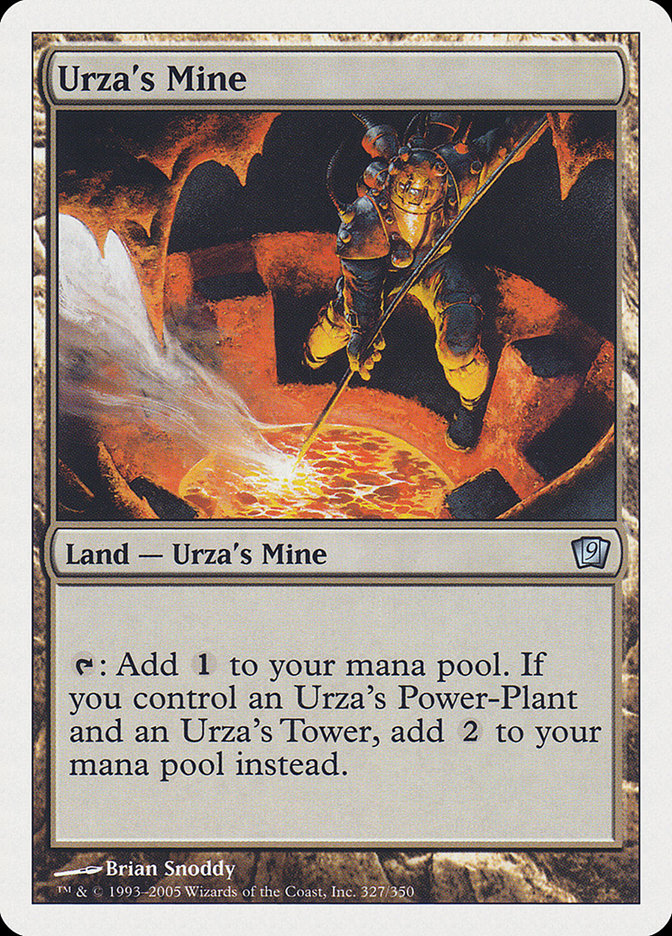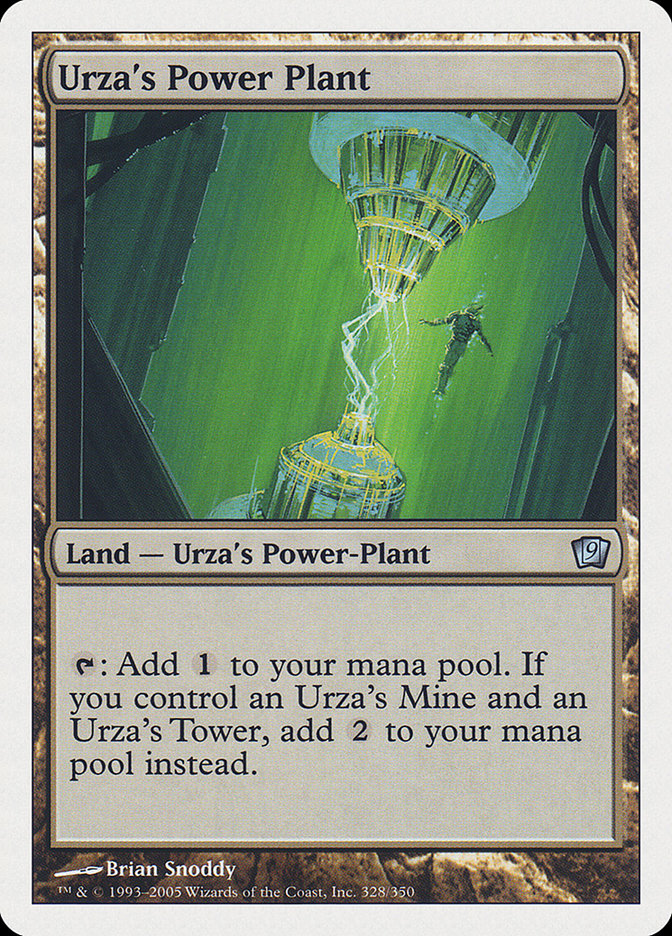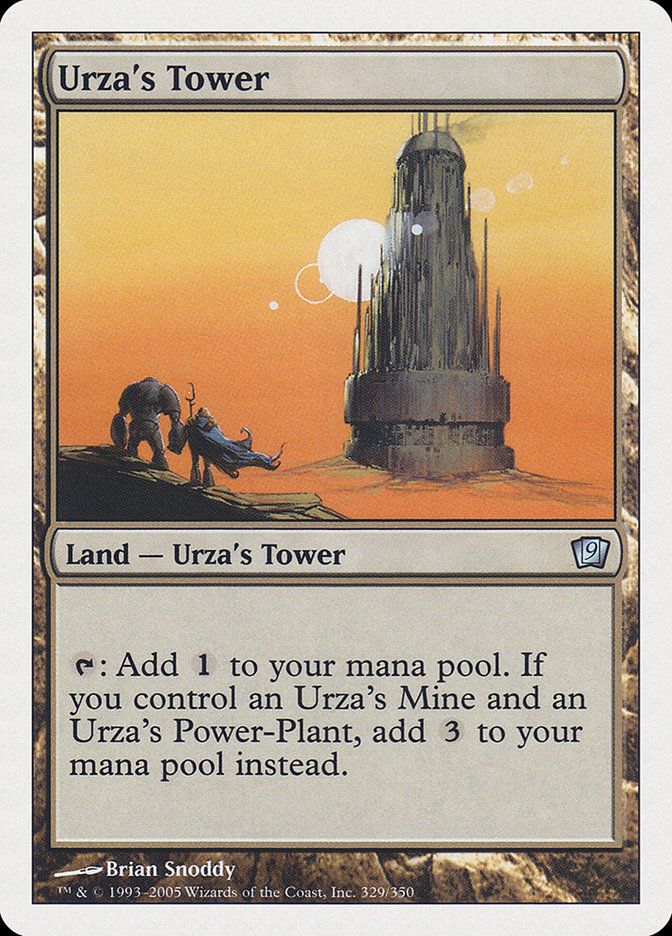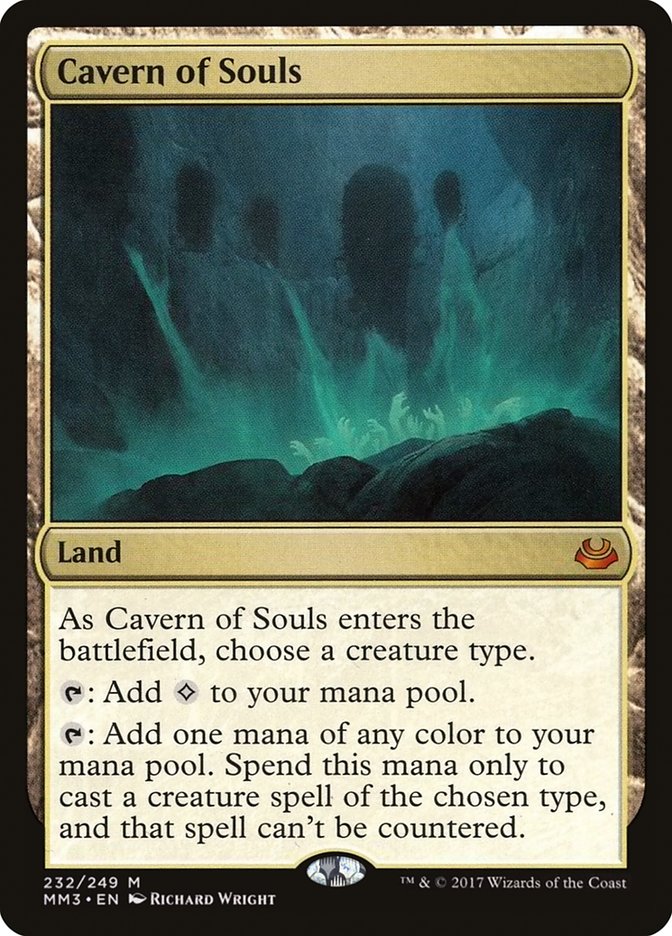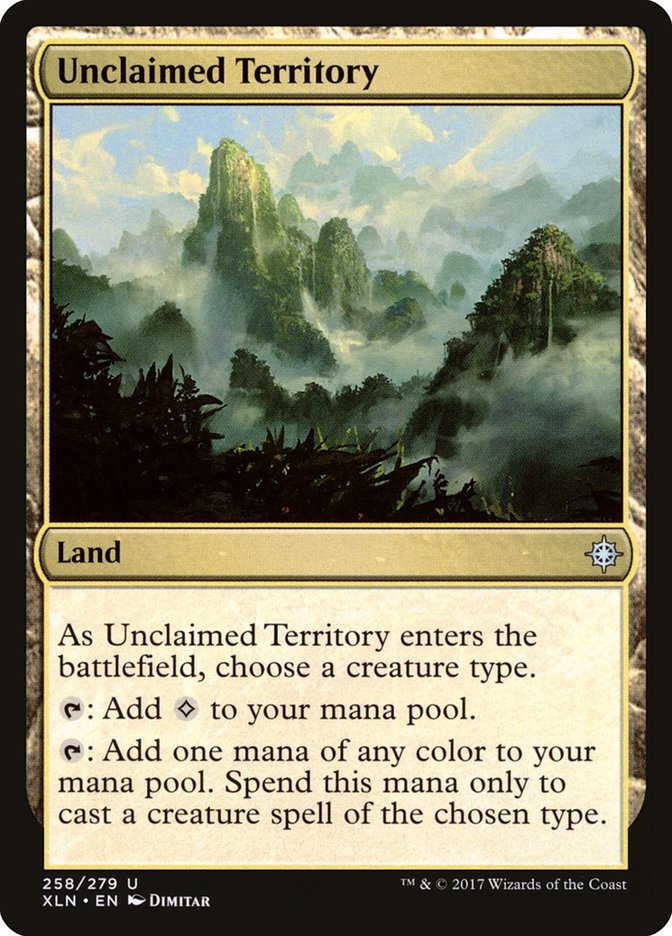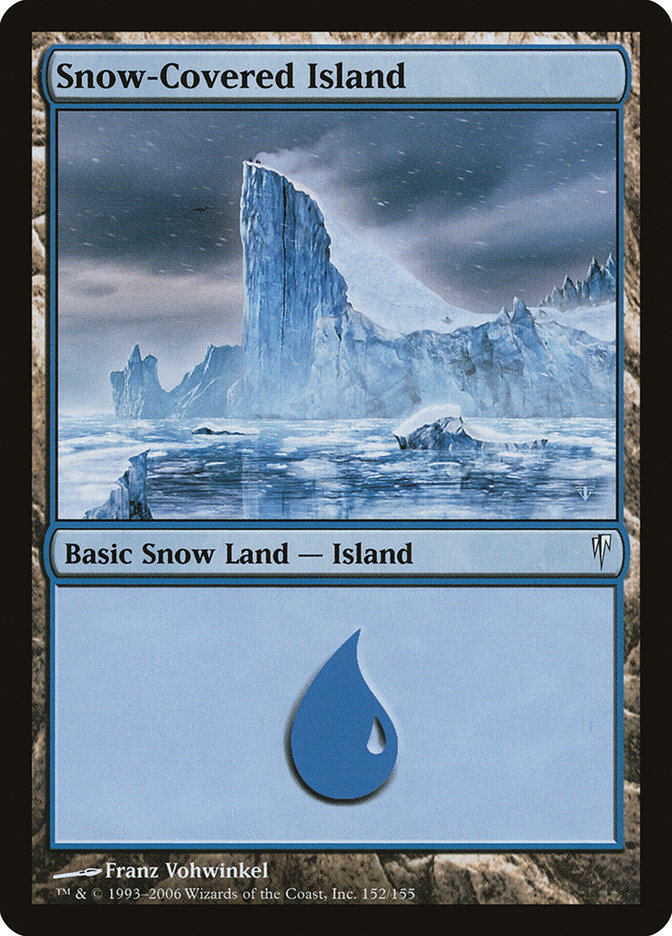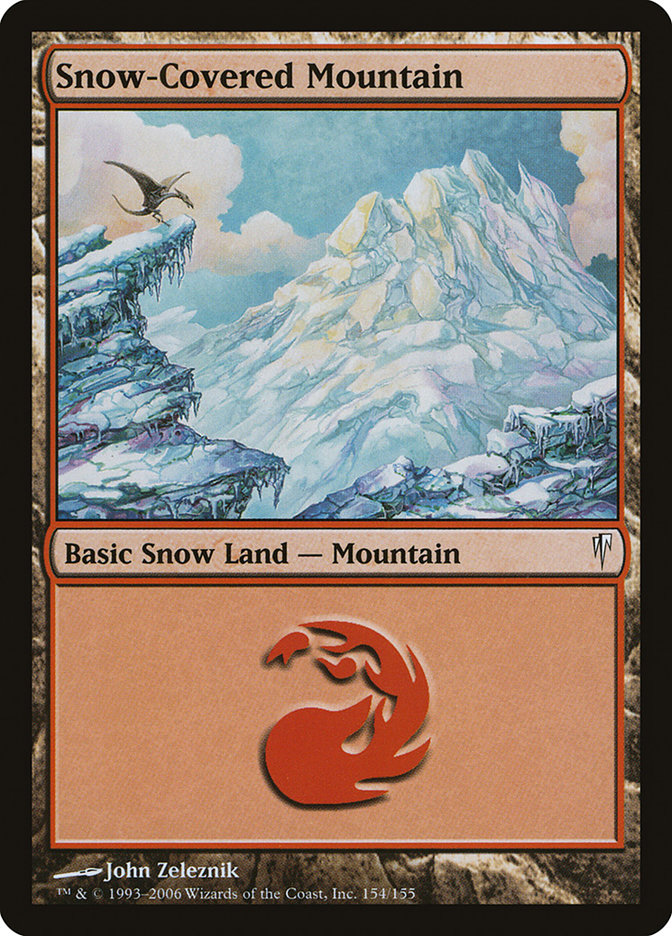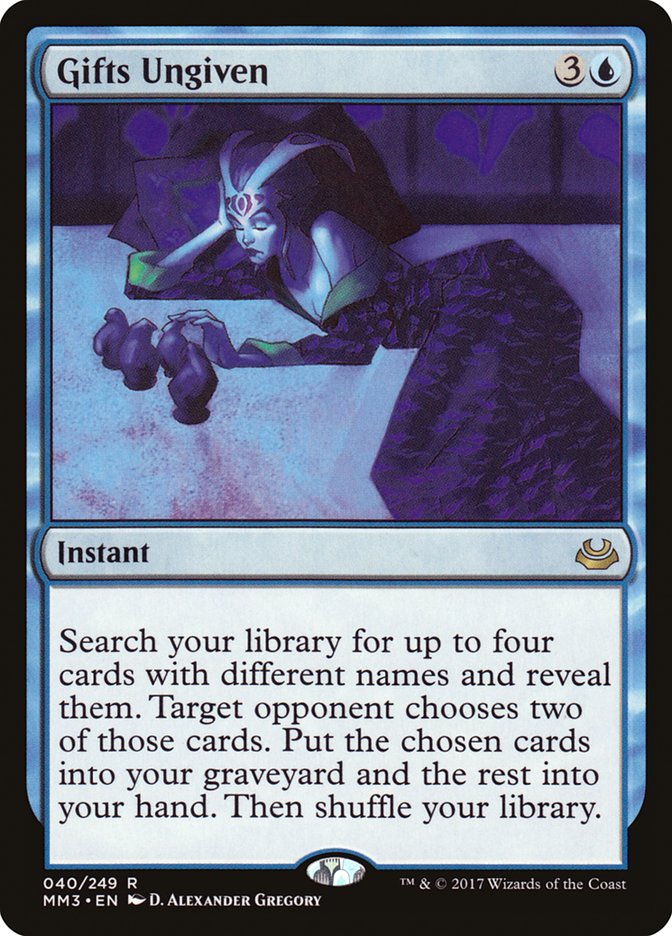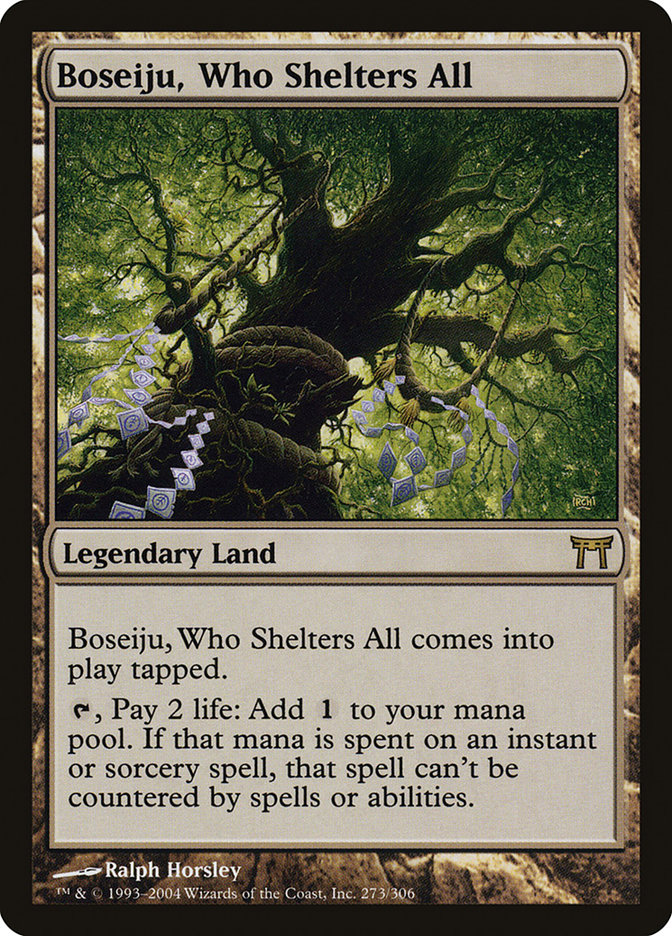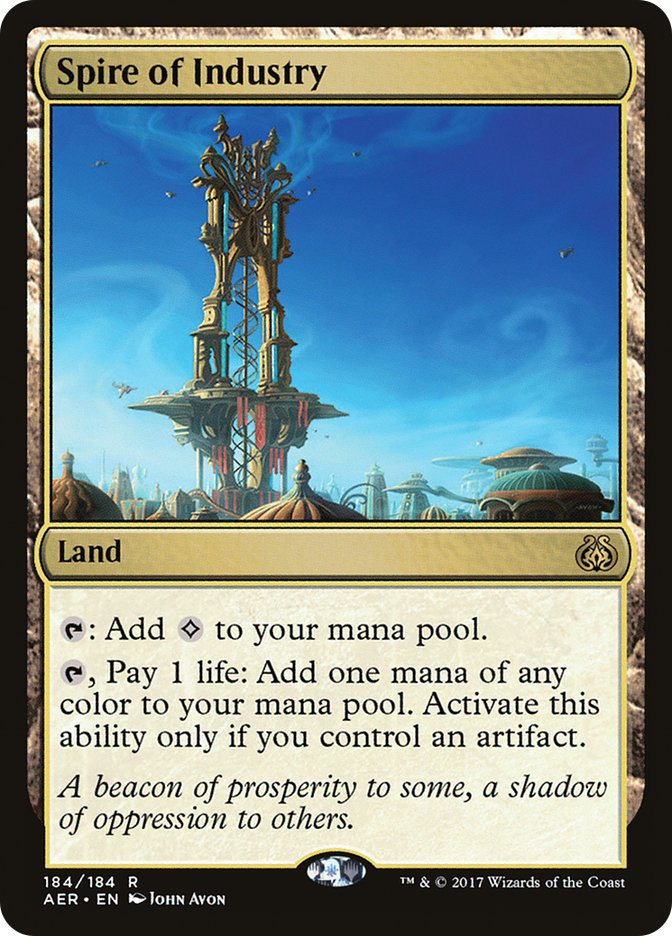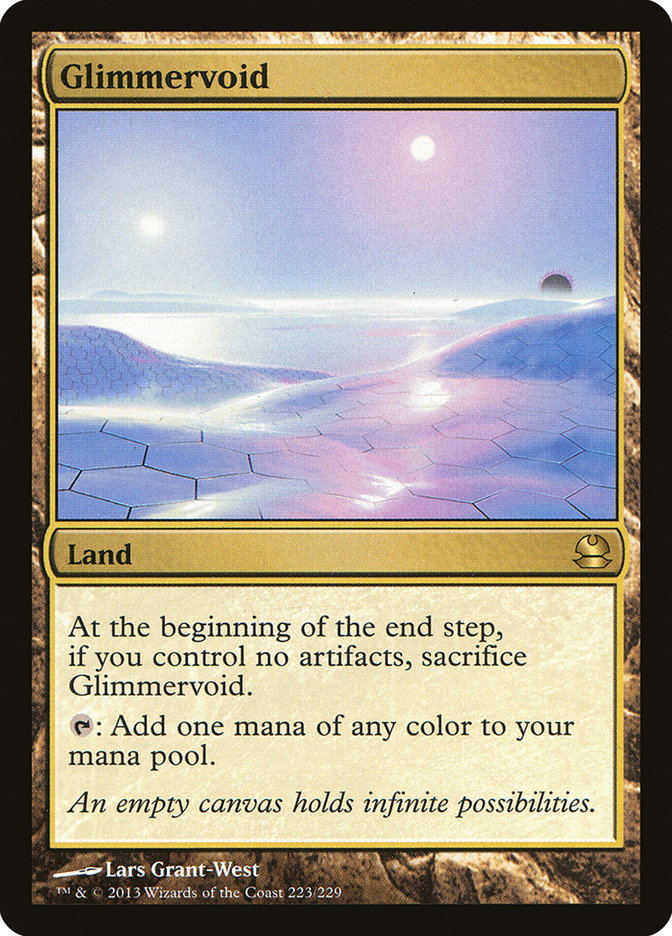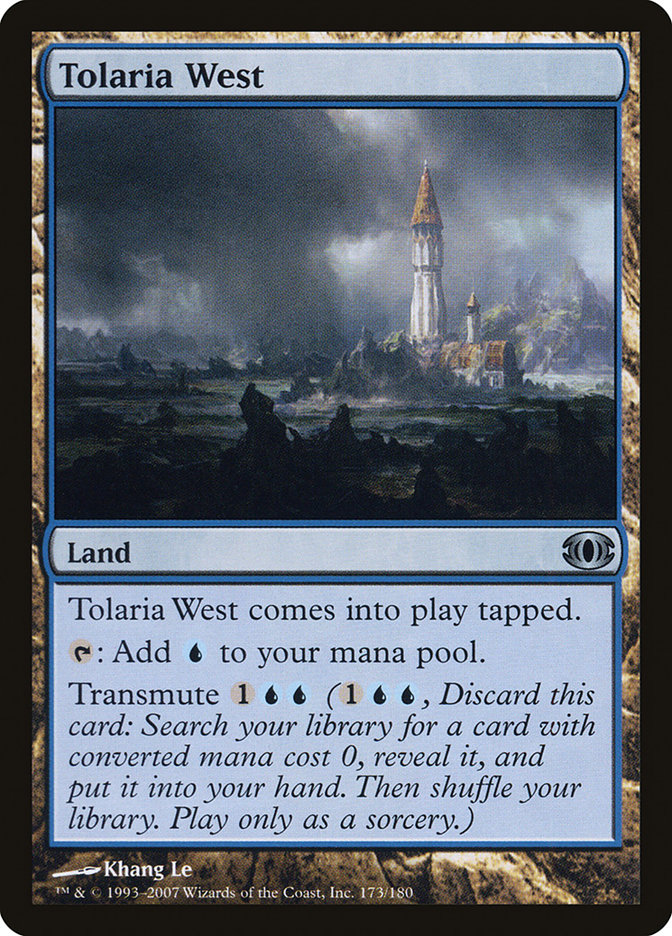Last week, I started writing about the various decks that one may play against in Modern, and how to best identify them from the first couple of cards that they played. With lands being the de facto starting point for most players, it only seemed natural to begin with Modern’s iconic shockland cycle when kicking things off.
Despite these lands being so prevalent, that doesn’t encompass everything, and there’s still a plethora of decks to talk about, so we’re going to dive right back into the thick of things.
Mutavault tends to make waves in tribal decks of the format that don’t play very many colors. Past that, it also is just the most efficiently costed creature-land available to decks that just need inevitability and shows up in some other grindier strategies as a result.
Creatures (31)
- 1 Kira, Great Glass-Spinner
- 4 Lord of Atlantis
- 4 Merrow Reejerey
- 4 Silvergill Adept
- 4 Master of the Pearl Trident
- 1 Master of Waves
- 4 Harbinger of the Tides
- 1 Kopala, Warden of Waves
- 4 Kumena's Speaker
- 4 Merfolk Branchwalker
Lands (19)
Spells (10)

Merfolk is probably the oldest tribal deck in the game, seeing representation in Legacy and even Vintage. Ixalan gave the deck some new goodies in Merfolk Branchwalker and Kumena’s Speaker, giving the deck a green twist. Despite this being the deck’s most recent success, Modern doesn’t always adapt quickly, and people are still playing more traditional versions of the deck:
Creatures (27)
- 2 Kira, Great Glass-Spinner
- 4 Lord of Atlantis
- 3 Merrow Reejerey
- 4 Silvergill Adept
- 4 Cursecatcher
- 4 Master of the Pearl Trident
- 3 Master of Waves
- 3 Harbinger of the Tides
Lands (20)
Spells (13)
Sideboard

Both decks are pretty easily identified from a blue land followed by an Aether Vial or Cursecatcher. Anything else the deck plays is going to tip off that it is a tribal Merfolk deck; it isn’t hard to figure out what a Master of the Pearl Trident is up to.
The biggest thing that may not be obvious at a glance is Botanical Sanctum in the U/G list. It’s easy to overthink yourself and assume that the opponent could also be on Infect or a Noble Hierarch deck, but most of those decks have fetchlands due to having three or more colors or needing to fuel Become Immense. Botanical Sanctum without a play on the first turn usually signals Merfolk, so take note.
8-Rack is named after its virtual eight copies of The Rack between the namesake and Shrieking Affliction. It can be a little hard to narrow things down to exactly 8-Rack, as basic Swamp into Thoughtseize or Inquisition of Kozilek on the first turn can look like any of the Tarmogoyf or Death’s Shadow decks that we’ve talked about. The biggest early signs that something is 8-Rack are going to be the previously mentioned Rack-styled permanents and Raven’s Crime, the Crime itself being a dead giveaway.
Also worthy of note: despite being a great color-fixer, Urborg, Tomb of Yawgmoth is usually a big arrow that points towards 8-Rack due to its ability to make Mutavault tap for black mana.
(P.S. Please don’t let Jadine Klomparens find out that Pack Rat cashed an Open recently.)
Okay, so these lands signal the inclusion of each other, but recognizing what’s going on with the other cards that people are playing can change everything, including the way you should play.
At their core, the Tron lands and their accompanying decks are trying to play big, powerful spells ahead of curve. While they’re assembling these lands, the deck has to stay alive somehow, and the colors (or lack thereof) that are coupled with the Tron lands go a long way in telegraphing the method that a player will use.
Creatures (8)
Planeswalkers (6)
Lands (19)
Spells (27)

G/R Tron is the “classic” flavor of the deck. Most traditional Tron variants are going to feature a green base for Ancient Stirrings and Sylvan Scrying. From there it gets a bit muddier. The biggest draw to red is that it has the easiest-to-cast sweepers in Kozilek’s Return, Firespout, and Pyroclasm. An early copy of Grove of the Burnwillows in Modern is usually going to mean a player has green cards, red cards, and Tron lands in their deck.
Creatures (6)
Planeswalkers (6)
Lands (19)
Spells (29)
- 4 Oblivion Stone
- 4 Sylvan Scrying
- 4 Chromatic Sphere
- 4 Chromatic Star
- 3 Relic of Progenitus
- 4 Expedition Map
- 4 Ancient Stirrings
- 2 Fatal Push
Sideboard

The G/B version of Tron has the same basic Ancient Stirrings / Sylvan Scrying stencil, but rather than looking at sweepers, the deck focuses more on spot removal in Fatal Push and the best hand disruption in the format out of the sideboard.
An early copy of Blooming Marsh is generally going to resemble something like Abzan Delirium, especially if it’s casting a quick Fatal Push. Llanowar Wastes, on the other hand, spells “G/B Tron” in a bold font. The deck leans towards more copies of Llanowar Wastes than the fastland due to its ability to cast any spell in the deck: World Breaker, Collective Brutality, or even Warping Wail. Couple that with how Llanowar Wastes can enter the battlefield untapped after Tron has been assembled, and it becomes clear why G/B Tron players gravitate towards the more painful option.
Creatures (20)
- 1 Wurmcoil Engine
- 1 Ulamog, the Ceaseless Hunger
- 2 Endbringer
- 4 Reality Smasher
- 4 Thought-Knot Seer
- 4 Matter Reshaper
- 4 Walking Ballista
Planeswalkers (1)
Lands (24)
Spells (15)

Shifting away from the over-the-top versions of Tron is the recently popularized Eldrazi Tron. Eldrazi Temple is the biggest draw to this version, as the deck chooses to give up consistently living the one mana-two mana-seven mana dream and in exchange accepts being a few mana ahead of the opponent at each phase of the game.
Outside of the Eldrazi creatures in this version of the deck, the pieces of interaction leave the breadcrumbs that should lead you to Eldrazi Tron. Chalice of the Void is particularly notable in this deck, as the aforementioned decks have a bunch of one-drops in Chromatic Sphere, Chromatic Star, and Ancient Stirrings that would cause them to trip over their own artifact.
It’s worthy of note that in each version of Tron, while maindeck copies of Relic of Progenitus are fairly common, they’re most frequent in Eldrazi Tron, as it is limited in what interactive spells it can play as a result of its color restrictions. The same is true of Walking Ballista.
We’ve already covered most of the decks that play painlands, and I won’t delve too far in here as a result, but whenever a player plays a painland instead of a fetchland, fastland (a la Blackcleave Cliffs), or shockland, take a minute to consider the factors that lead people to consciously decide to play these.
The most common reason is to support multiple colors in addition to the colorless mana that Eldrazi demand. Whether Bant Eldrazi playing Yavimaya Coast to cast several different colors of spells every game or Llanowar Wastes in the G/B Tron deck above, it carries a heavy implication about what colors the opponent is playing.
Or it’s just this:
Creatures (6)
Lands (17)
Spells (37)
- 4 Sleight of Hand
- 4 Serum Visions
- 4 Gifts Ungiven
- 4 Desperate Ritual
- 4 Opt
- 3 Remand
- 3 Grapeshot
- 4 Manamorphose
- 4 Pyretic Ritual
- 1 Noxious Revival
- 2 Past in Flames
Sideboard

I’d alluded to it in the first part of this series, but Caleb Scherer has been championing the fetchless version of Storm for awhile, and Paul Muller runs in the same circles as the Storm legend. The reason for playing without Scalding Tarn and friends is in order to increase the power of scrying in the deck.
Ideally, whenever something is scryed away, it is gone forever. This isn’t the case when fetchlands cause one to shuffle the deck and change the placement of cards within it. While the card that was scryed to the bottom may not be the top card of the library, it can end up being something that a Storm player stumbles across and doesn’t want. Removing fetchlands from the equation eliminates this risk, so long as a Gifts Ungiven isn’t resolved.
This means that, despite this list being very similar to a tradition version of Storm, Shivan Reef signals that there won’t be any fetchlands in the deck and can also indicate some of the sideboard cards to play around…or not. Blood Moon, for example, is present in many lists that play fetchlands (due to their ability to find basic Islands at will) but is absent from fetchless builds.
These go in tribal decks.
Listen to what creature type they name, and that’ll probably tell you the second half of their deck’s name, the first half being how many colors it plays.
Some people play Snow-Covered lands as a joke. They’re legal, so it’s a silly way to play something a little off the beaten path. Except this deck exists:
Creatures (8)
Planeswalkers (6)
Lands (23)
Spells (23)

Skred Red is doing things similar to the R/W Prison deck in the first section of this series, but it’s a little more interested in closing the game than the R/W deck is. This deck also doesn’t rely on Chalice of the Void in quite the same way.
Blood Moon and Relic of Progenitus both do a fair bit of work in trying to keep the greedy and busted things in check, while Koth of the Hammer, Stormbreath Dragon, and company all try to close the door as quickly as possible.
Any time a Snow-Covered Mountain hits the table, Skred Red should be the assumed archetype, and a plan to beat a pile of creature removal should be formulated. Between Lightning Bolt, Skred, Anger of the Gods; Chandra, Torch of Defiance; and Roast, Skred Red makes being a creature rough.
The other situation where cnow-covered lands can become relevant is when Gifts Ungiven gets involved. While it doesn’t come up often, there are times when having the ability to find Island and Snow-Covered Island with Gifts Ungiven is relevant, and most Storm lists tend to have a nonzero number of Snow-Covered Islands as a result.
Boseiju, Who Shelters All is frequently played in combo decks that need to resolve a single spell in order to win. Older Scapeshift decks played some copies of the card, but it’s mostly fallen on the wayside in that deck, predominantly because the deck already has a good matchup against counterspells and doesn’t need the help.
Creatures (4)
Lands (20)
Spells (36)

Ad Nauseam, on the other hand, just needs to resolve a copy of Ad Nauseam, and then it has several copies of Pact of Negation at its disposal to make sure that its payoff card resolves.
For more information on the Ad Nauseam deck, check out the “Hallowed Fountain” section of the first part of this series!
It doesn’t take a rocket scientist to figure out that these cards are played with artifacts, but there’s a lot of information to be had past that point.
Creatures (27)
- 4 Arcbound Ravager
- 4 Ornithopter
- 2 Master of Etherium
- 4 Steel Overseer
- 3 Memnite
- 2 Etched Champion
- 4 Signal Pest
- 4 Vault Skirge
Lands (16)
Spells (17)

Continuing with the gimmes, Affinity is literally the oldest deck in the format, first being played in the Community Cup before Modern was an established format. It’s hard to get into the format without recognizing some of the signs of the impending robot siege. While most artifact decks sporting Spire of Industry and Glimmervoid will also have Mox Opal, Affinity will use these to power out creatures to get their opponents dead.
Watching for which basic land they play can help deduce other cards in their deck. A Mountain means they’re leaning towards the full set of Galvanic Blasts; an Island hints at Thoughtcast.
Lands (18)
Spells (42)

On the exact opposite end of the spectrum is Lantern Control. Rather than trying to close the game in the first few turns, Lantern plans to deck the opponent by setting up several lock pieces in Lantern of Insight and Ensnaring Bridge.
The deck adopting Whir of Invention recently has led to a shift in its manabase, helping it become more identifiable. Other than U/G Merfolk, nothing else is playing Botanical Sanctum, and most of the U/B-based control decks are interested in playing fetches to fuel their delve spells, making Darkslick Shores a strong signal.
The hand disruption spells can be big signals, but the real sign is in all of these:
These are all cards that enable Mox Opal and cheapen Whir of Invention. This type of deck wants as much time as possible, due to it being able to answer just about anything given enough time. Trying to take it out swiftly is the key to winning the matchup.
Tolaria West is one of the biggest signals that there’s something fishy afoot. If somebody is willing to pay three mana to search their deck for a card with a converted mana cost of zero, assume that they’re doing something unfair.
Creatures (12)
Lands (28)
Spells (20)

Including Tolaria West in this series may have seemed off at first, due to the fact that it won’t get transmuted until later in the game, but the deck that plays it the most has a nasty habit of not keeping its lands on the battlefield for too long.
Amulet Titan uses Amulet of Vigor in conjunction with Primeval Titan to create a bunch of heavy-hitting giants far ahead of the curve. Outside of the deck’s Amulet of Vigor, Ancient Stirrings can be a reasonable giveaway, as it will frequently reveal one of the deck’s “bouncelands” from the original Ravnica block.
Explore can narrow things down to either this or TitanShift pretty quickly. Sakura-Tribe Scout is the non-Amulet spell that goes exclusively into this deck and should be noted.
Creatures (15)
Lands (21)
Spells (24)
Sideboard

One of the newest decks in the format is the mono-blue Living End brew. It uses As Foretold to cheat out busted spells in the form of Ancestral Vision and Living End. The deck plays a slew of Islands and may look innocuous at first, but at the first sign of cycleable mono-blue creatures, then As Foretold should instantly be on one’s radar.
Outside of the cycling creatures, seeing near-exclusively Islands and a wall of counterspells should at least put this deck in the back of your mind. Be careful, as the coast can be clear…and then the opponent cycles three creatures on their opponent’s end step before resolving As Foretold (and then Living End) the following turn.
Doing Some Homework
This only scratches the surface of everything that happens in Modern. I didn’t talk about Slivers, Soul Sisters, or Ponza. Modern has dozens of decks that are all viable, and the only way to find out about all of them is to jump in and start playing.
This guide is meant to introduce newer Modern players to the format at large and help them figure out what’s going on in the way that a study guide does for someone about to take a test. Study guides aren’t just going to copy the test verbatim, and this is the same way. I haven’t played a tournament in months where I didn’t have to figure out what new thing my opponent was doing at some point during the rounds.
The more we understand these types of formats as being a sum of their parts, the easier it is to draw connections and figure out what’s going on, even from a deck that you haven’t seen before. So get out there and start filling in the blank spaces of Modern’s Family Tree.




